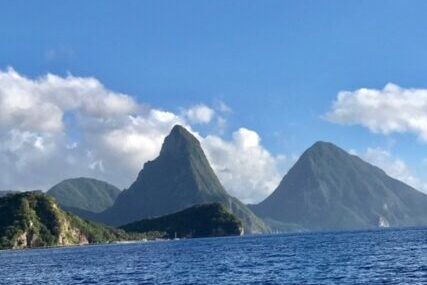
I understand the Caribbean’s undeniable allure. I’ve traveled to over 15 different Caribbean islands. The crystal clear turquoise water and picturesque beaches are hard to resist. Each island has its own culture, cuisine, and topography. Yet more than any other island, St. Lucia’s Pitons are the unique natural feature that helps differentiate it from the others. Beaconed back to the Caribbean once again, I set off to see the Pitons and connect with nature on the island of St. Lucia.
The Pitons
Connecting with Nature on the Island of St. Lucia
The Pitons, two lush, mountainous volcanic spires, rise tall from the depths of the Caribbean sea along St. Lucia’s western coast. The huge cone shaped lava spikes are part of a UNESCO World Heritage site . It occupies an area of about 7,190 acres near the town of Soufriere. The conservation region consists of areas both on land and sea.
The two peaks, Petite Piton is 2,461 feet high, while Gros Piton reaches 2,619 feet. The trail to Petite Piton is incredibly steep and rarely climbed. Climbers require special permission and guides.
Gros Piton is however climbable, but even those in good shape reported struggling on the uneven terrain during the long ascent. Hindered by humidity and soaring temperatures during the 3- 6 hour journey it can be difficult, but not by all means impossible. Hikers report seeing a variety of birds and an abundance of wildflowers along the trails. At the top climbers are rewarded with sweeping views of the Caribbean ocean and St. Lucia’s 27 mile long, 14 mile wide island mass.
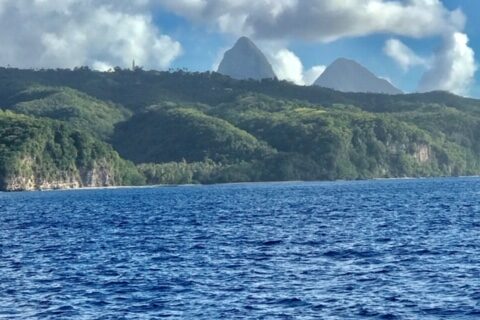
Catamaran Sailing Tour
Connecting with Nature on the Island of St. Lucia
While I wanted to hike up Gros Piton, I was on the mend from a knee injury. Instead, I decided to see the Piton’s in another way, by joining a catamaran sailing tour.
The sails gently flapped in the soft, warm breeze. The catamaran rocked back and forth in the gentle sea. I was blissfully relaxing. The boat meandered along the coast of St. Lucia. Lush jungle, hidden coves with crescent-shaped beaches, and small fishing villages paved the way toward the Pitons.
About St. Lucia
The many streams that flow from the mountains contribute to St. Lucia’s flourishing green landscape. The fertile soil in turn nourishes St. Lucia’s main crop, green figs (the local name for green bananas.) Green fig with salt fish, a spicy, hearty meal, is the national dish of St. Lucia. It was first served as rations to the island’s slaves in the 19th century.
The island’s diverse blend of African and Indian cultural history and French and British occupation over the years, have all contributed to St. Lucia’s cuisine. The local market in Castries, the island’s capital city, boasts 30 varieties of mangos. St. Lucia’s official language is English, however, Creole a form of French Patois, is widely spoken.
Marigot Bay
Connecting with Nature on the Island of St. Lucia
The catamaran tour made a stop in Marigot Bay also called Hurricane Hole. Steep hillsides surround this small deep bay and protect the area from inclement weather. The area is lush and secluded.
French ships would sail deep into this dazzling bright blue bay. They’d hide behind the sand spit to escape the British fleet. They would then lower their sails and tie palm fronds to their masts, blending the ships into the palm trees. The British in turn would sail right past the bay without seeing the French hiding within.
Kayakers today paddle past the tall billowing palms and mangroves with its distinctive arching roots. Free water taxis make it easy to visit the breezy bars and restaurants along the cove. Atop the mountain sits the village of Marigot, several resorts, and private residences. With an idyllic and peaceful vibe, Marigot Bay is a true treasure.
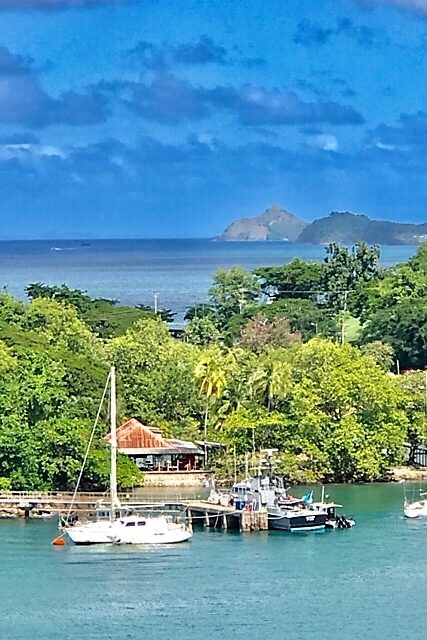
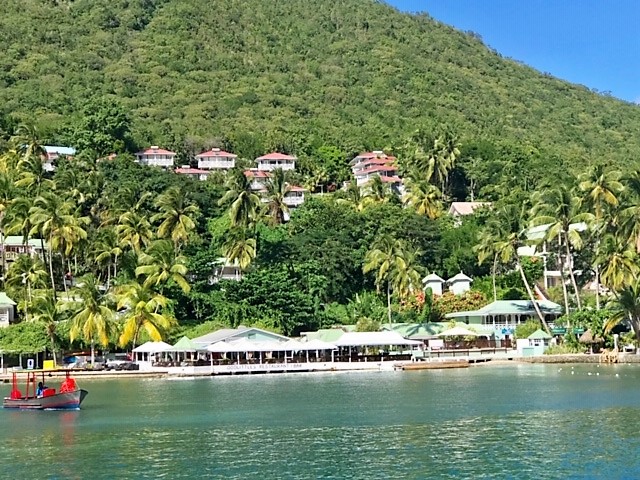
Anse Cochon Bay
Connecting with Nature on the Island of St. Lucia
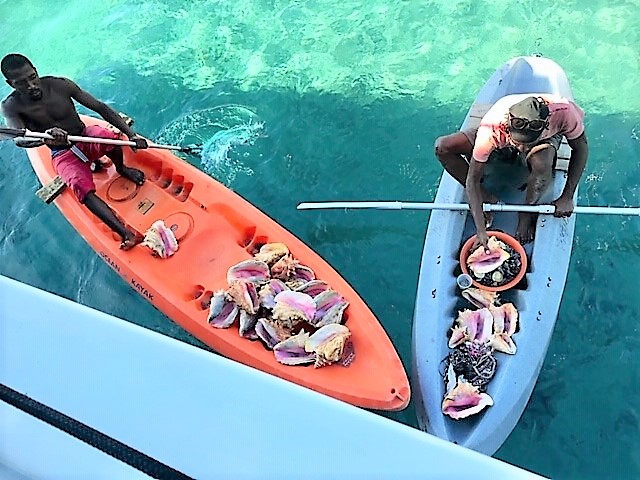
The next stop was Anse Cochon Bay. Conch fisherman and local vendors were selling handmade trinkets from their kayaks. The calm water and adjacent reefs, which are part of the National Marine Reserve, made it a superb spot to snorkel. The dark sand beach offered a relaxing spot to appreciate the beauty of the area.
Underwater, schools of silverfish darted in and out of rocky areas. Parrot fish and French angelfish darted over the seagrass at the center of the bay. Colorful corals, sponges, sea fans, and urchins lined the ocean’s bottom. I watched local divers hand-spear the island specialty, fresh lobsters.
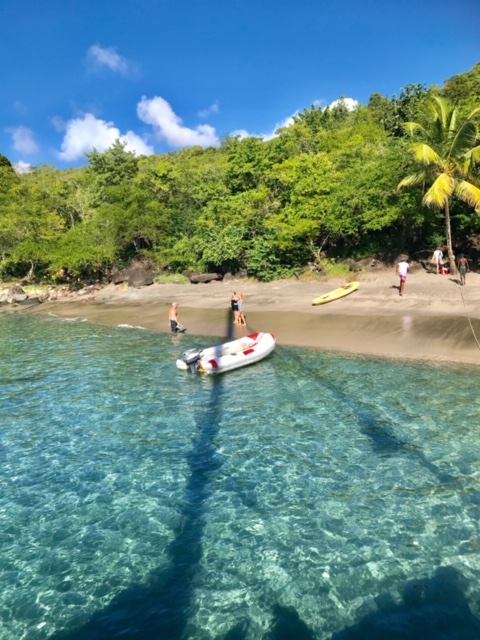
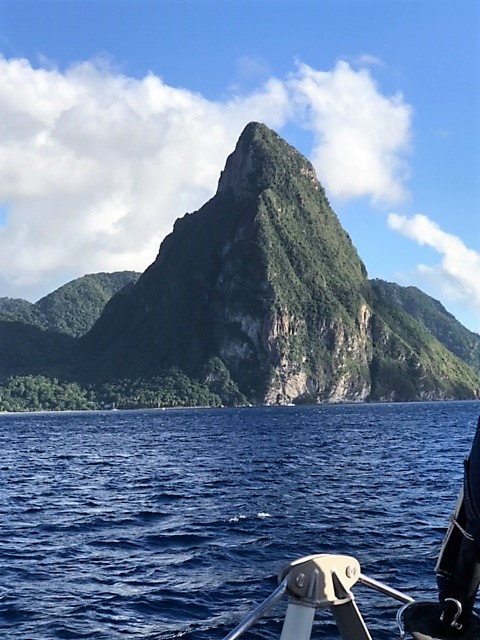
The Pitons in View!
The catamaran excursion continued its sail along the west coast of St Lucia. The Pitons peeked their heads from around the bend. “There they are,” I exclaimed! Two immense pyramids of rock rose sharply from the sea.
Covered in emerald colored vegetation the volcanic land formations of the Pitons were a stunning sight. They truly dominated the St. Lucian landscape as they came into full view. Their superlative beauty, indescribable. Staring up at a mountain more than 2,000 feet high is awe inspiring.
Near Petit Piton sits the crater of the Soufrier Volcano, last erupted in the 1700’s and considered to be dormant. Visitors can take a volcanic mud bath in the hot springs and then rinse off in a waterfall.
Unspoiled St. Lucia offers a myriad of ways to connect with nature. It’s important when you travel to find time to enjoy quiet moments and get in touch with the natural beauty. Whether you explore St. Lucia by land or sea dramatic natural wonders prove that Mother Nature can wow even the most seasoned traveler.
If you love adventure travel and off the beaten path destinations, visit boulevardsandbyways.com and like/follow me on:
